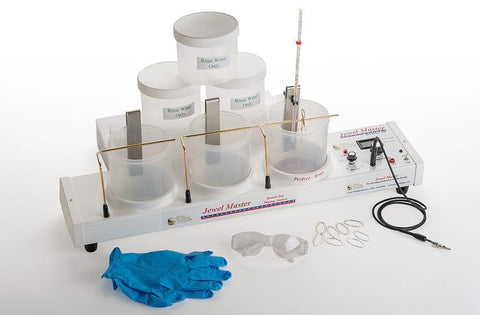Electroplating is the process of coating a surface with a thin layer of metal. The negatively charged object to be plated is submerged into a solution of positively charged metal ions. Plating results when the positively charged ions meet the negatively charged object, and they become neutral. Since the ions are no longer charged, they settle down in a very thin coat on the object being plated.

Electroplating is an extra step that helps extend the life of an object or accessory. It coats the object to protect it from dust or exposure to the elements, but there are so many more reasons to electroplate different items. Here are just a few of them:
- Prevent corrosion - Electroplating is one way to ward off corrosion, especially when the metals being plated are naturally corrosive. Covering the corrosive metal with a thin layer of non-corrosive metal will prevent corrosion of the surface. One example of this is when cheaper metal jewelry is coated in 10k gold, keeping it from turning green after being worn for an extended period of time.
- Improve the aesthetics - Electroplating is commonly used in jewelry where cheaper metals are coated with gold and other high-value metals to make them look pristine and expensive.
- Increase electrical conductivity - Gold and silver are good conductors of electricity, but they are too pricey too fill electronics with. Integrated circuits in computers and other electronic devices are made of cheaper metals that do not conduct electricity effectively. To improve their conductivity, the parts are coated with a thin layer of gold or silver.
- Commercial application - Various car parts are made of non-smooth metals. These parts are plated with a thin coat of chromium, or other shiny metal, in order to make them look smooth and polished. When buffed, this plating gives off a high shine that is appealing to car fans.
- Protect against radiation - Many metals do not have inherent protection from radiation, abrasion, and other natural occurrences. To make up for this, these metals are coated with a thin layer of protected metal as additional defense against these natural phenomena. The extra coating protects the metals inside and prevents damage.
- Reduce friction - Some metals are prone to too much friction when they come in contact with each other. To reduce the amount of resistance, a thin layer of a different metal is added to one or both of the parts. The coating acts as a buffer and prevents metals from rubbing against one another. This is essential in machine work or factories where metals are widely used in production.
Electroplating adds beauty, resistance, and durability to metals and is used in countless applications in today’s world.
